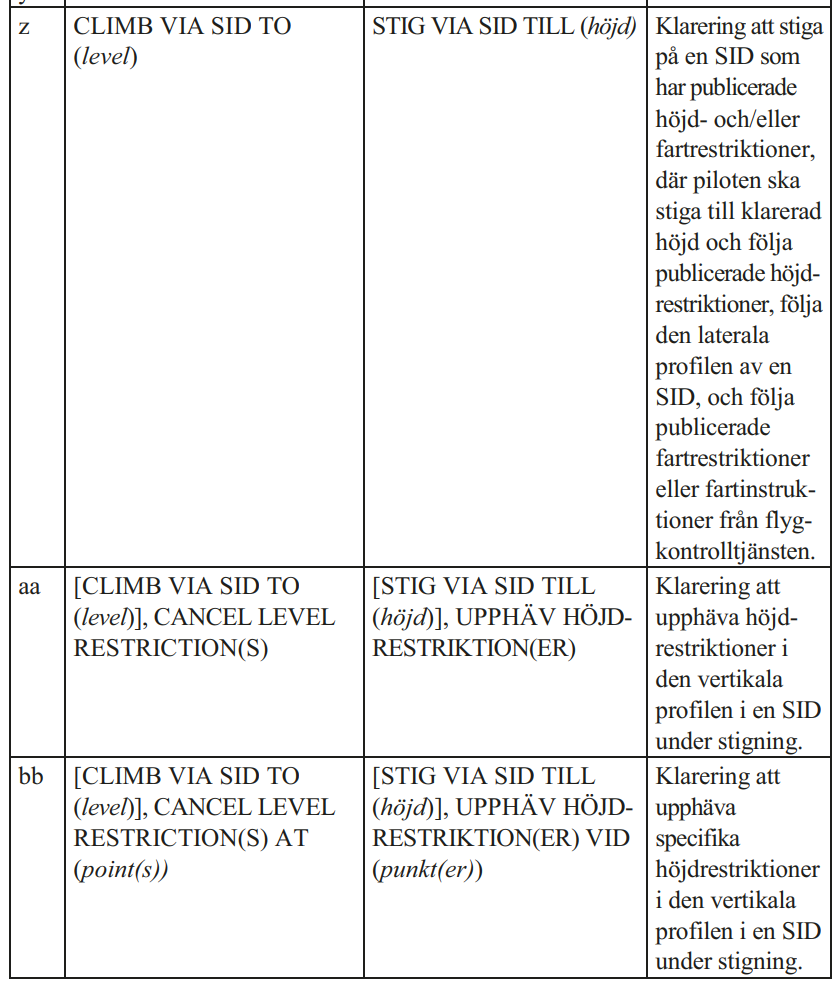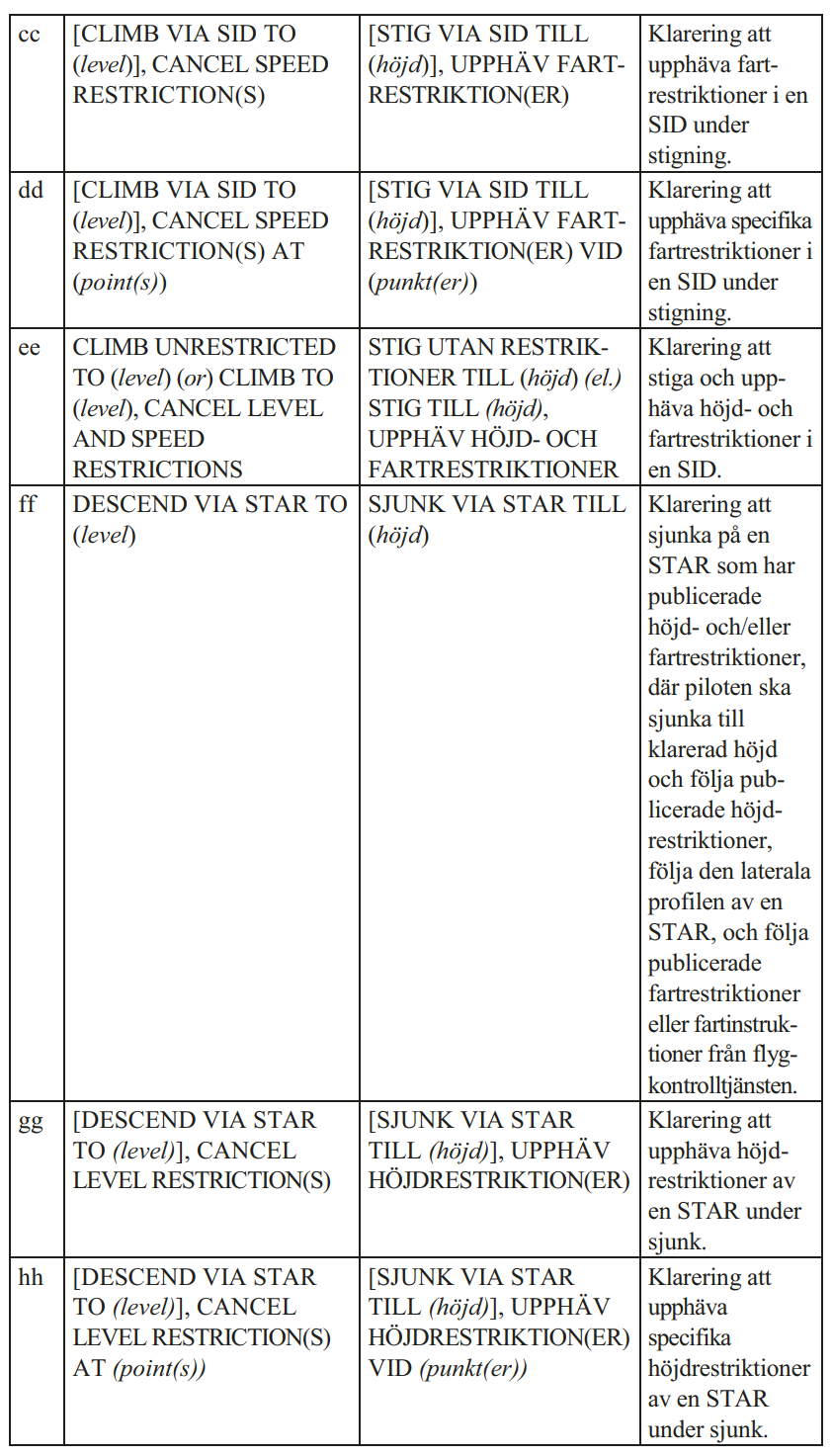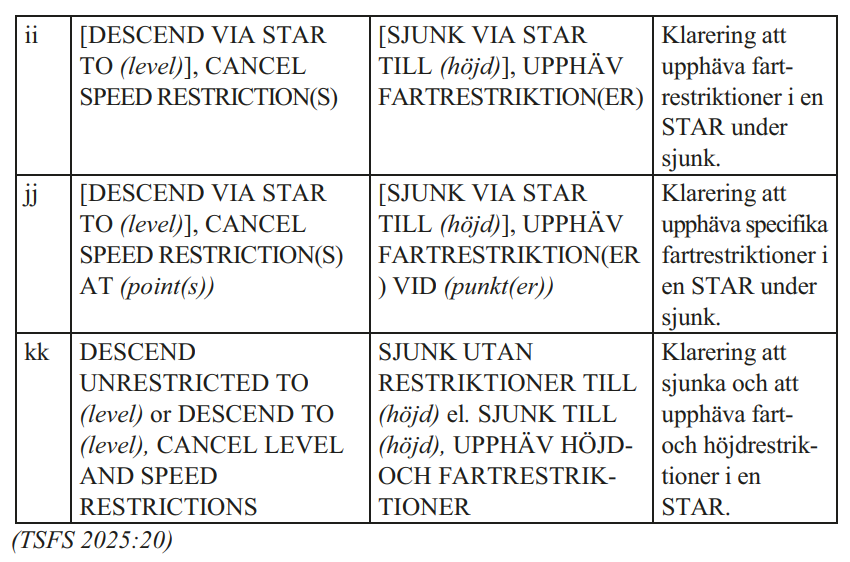OPERATIONAL BULLETINS IN EFFECT 30 OCT 25
General information: LOP and LoA discrepancies
Several LOP documents are not up to date which means there can be discrepancies between for example LOP TWR and LOP ACC, or between LOP and AIP information. Generally, our LOP documents are based on AIP information, airport regulations, as well as information from controllers or local documents on how the real ATS units operate. In some cases, where we lack solid information, we have made educated guesses to make sure we as VATSIM controllers have a logical procedure to work with.
Where LOP is not up to date, you may find that LOP may refer to navaids, waypoints or procedures that are no longer available according to AIP. At several airports there are also new RNP approach procedures and associated waypoints which can be used to provide direct routings. In these cases AIP data takes precedence. Note that EuroScope data in general should be up to date. If there is a discrepancy between different LOP documents, refer to the last updated document. Use verbal or system coordination between controllers to ensure you have the same understanding.
Where there is a discrepancy between LOP and LoA, the information in LoA takes precedence as this will be more up to date than the LOP, which is based on LoA.
If you find LOP information that is inconsistent with other sources (e.g. AIP, EuroScope data), please report it so we can rectify it or clarify the correct procedure.
Transfer levels from ESMM ACC to ESGG APP
ESMM ACC will give descent clearance to FL160 for traffic via MOXAM/NEGIL with destination ESGG. This means Swedish ACC sectors will transfer all traffic with destination ESGG to ESGG APP descending to FL160 (EKDK still descends its traffic to FL130).
Transfer levels between ESMM L and ESMM 8
Previously, some traffic between ESMM L and ESMM 8 was climbed/descended to FL250/FL260. This has been changed so all traffic between these sectors will now be climbed/descended to FL280/FL290:
- ESMM 8 will give descent clearance to FL290. Since the distance to touchdown at ESMS/EKCH from the ESMM L/ESMM 8 horizontal boundary is quite short, the traffic should be transferred as early as possible with a release for further descent to avoid getting high on profile. If this is not possible due to the traffic situation, ESMM 8 should coordinate a lower transfer level with ESMM L.
- ESMM L will give climb clearance to FL280.
Note: There is no change to traffic from ESMM L to EDWW - this traffic will still be climbed to FL250.
Clearance in uncontrolled airspace for IFR flights
This procedure has been in effect for some years, but so far it hasn't been written in our documentation:
The structure of many of our TMAs means that it is often preferable to let IFR traffic descend through uncontrolled airspace, to avoid level-off above their ideal descent profile. However, in line with current regulations, ATC shall not initiate a clearance that will cause a flight to leave controlled airspace. This means that any clearance that will take the flight into uncontrolled airspace must be requested by the pilot, which ensures that the pilot is aware that the flight will leave controlled airspace.
Procedure for arriving traffic:
- Advise the pilot to maintain FL100 (or other level as appropriate) due to uncontrolled airspace below FL95 until the TMA boundary. This could be worded in different ways to ensure it is properly understood by the pilot, for example "uncontrolled airspace for the next X miles / X minutes / until passing point ABCDE".
- Give traffic information regarding the uncontrolled airspace until the TMA boundary. If there is no reported traffic use the phrase "NO REPORTED TRAFFIC OUTSIDE CONTROLLED AIRSPACE" / "INGEN RAPPORTERAD TRAFIK UTANFÖR KONTROLLERAT LUFTRUM".
- Inform the pilot that clearance for further descent is available on request.
- If the pilot responds by requesting descent, issue descent clearance. If not, the flight must remain within controlled airspace.
Departing traffic: The same rule applies for departing traffic, that ATC is not allowed to initiate a clearance that will take the flight outside controlled airspace. If a pilot requests a direct routing or a level-off that takes the flight outside controlled airspace, such requests can be granted provided the pilot is informed that the flight will leave controlled airspace. Traffic information shall also be issued in the same way as for arriving traffic.
Vectoring: Vectoring may be initiated outside controlled airspace only if the intention is to lead the traffic into controlled airspace.
Note: For IFR flights which are flight planned to leave controlled airspace, i.e. cruise level below CTA or going to/from AFIS airports or other uncontrolled airports, it is assumed that the pilot is aware that the flight will be conducted outside controlled airspace, so for these flights there is no need for the pilot to explicitly ask for clearance to leave controlled airspace.
Spacing of traffic from ESOS ACC to Stockholm APP
There is an error in LOP ESOS ACC where it says that traffic to ESSA/ESSB from ESOS ACC sectors shall be sequenced as one flow with minimum distance 8 NM. This is incorrect, as 8 NM only applies for traffic inbound Stockholm TMA transferred from ESMM ACC sector W/Y to ESOS ACC. LOP ESMM ACC describes this correctly.
The correct minimum distance for traffic from ESOS ACC to Stockholm APP is 5 NM constant or increasing (as with other transfers from ACC to APP/TWR units). The 5 NM spacing is also correctly mentioned in LPM Stockholm TMA.
Change to ESSA low speed departures
To mitigate the effect of wind, the initial heading for low speed departures has been replaced by an initial track.
The syntax for a low speed departure clearance will now be: (callsign), CLEARED TO (destination), AFTER DEPARTURE TURN RIGHT (or LEFT) TRACK (3 digits), 3000 FEET, EXPECT VECTORING TO (exit point), SQUAWK (code).
The final heading remains a heading.
Changed phraseology effective 1 May 2025
New AFIS phraseology
The phrase RUNWAY (number) FREE is replaced by NO REPORTED TRAFFIC RUNWAY (number) / INGEN RAPPORTERAD TRAFIK BANA (nummer).
New phraseology CLIMB VIA SID / DESCEND VIA STAR
CLIMB VIA SID / DESCEND VIA STAR is used when giving climb/descend instructions to aircraft that are established on a SID/STAR with level or speed instructions ahead along the route.
- An aircraft is considered established on a STAR when it has passed the first waypoint of the STAR. An aircraft that is cleared direct to a point on a STAR without passing any waypoint on the STAR is not considered established on the STAR until it has reached a waypoint on the STAR.
- An aircraft is considered established on a SID if departing on a SID and following the SID routing, or if cleared direct to a waypoint on the SID. If an aircraft is cleared to a point not on the SID it is no longer established on the SID.
- If a SID/STAR has no level/speed restrictions along the route, "CLIMB VIA SID" / "DESCEND VIA STAR" is not used; use "CLIMB/DESCEND TO (level)" instead.
- New phrase "REJOIN SID/STAR" is also introduced. This is used when taking an aircraft off the SID/STAR routing for any reason and then clearing it back to rejoin the procedure. The full phrase is "CLEARED DIRECT (waypoint), CLIMB/DESCEND TO (level)", followed by "REJOIN SID/STAR (SID/STAR designator) AT (waypoint)".
Examples:
- ACC will not use "DESCEND VIA STAR" when giving descent clearance before the first point of the STAR.
- TWR/APP will use "DESCEND VIA STAR" if there are level/speed restrictions ahead along the STAR. This applies mostly to closed STARs.
- At ESSA, the only open STAR that has a level restriction after the first point of the STAR is ELTOK 7M. So for ELTOK 7M only, "DESCEND VIA STAR to (level)" is used. For other open STARs use "DESCEND TO (level)".
- When descending as part of an approach procedure, "DESCEND VIA STAR" is not used. "VIA STAR, CLEARED (type) APPROACH" can still be used.
- "CLIMB VIA SID" is used if there are any level/speed restrictions ahead on the SID. For example, ESSA RWY 08 SIDs have speed restrictions until the first turn is complete (speed restrictions at points SA413/424/557/ARL), so "CLIMB VIA SID" is used for any climb instruction before the last point with a speed restriction.
- Some airports have no restrictions on any SIDs and others have restrictions at the last point in the SID. Check the charts for each airport to know when to use "CLIMB VIA SID"!
NOTE: The basic rule is still that level and speed restrictions on a SID/STAR must be followed unless specifically cancelled. So even if you forget to say "via SID/STAR", pilots are still expected to follow the SID/STAR restrictions.



The full phraseology regulation can be found here: https://www.transportstyrelsen.se/TSFS/TSFS%202019_36k.pdf
NEW: Updated LoA with Denmark
New LoA available here. As an updated LOP for ESMM ACC is not yet available, all controllers are encouraged to read and familiarise themselves with the actual LoA. A brief summary of the most significant changes affecting Swedish controllers is included below:
- VTC addendum removed. Flow management during VTC is now handled tactically.
- New EKDK ACC sectors UA, UC and UV.
- EKCH arrivals: Unless Runway 22L is in use for arrivals, arrival runway must be coordinated verbally for the
following aircraft: A388, C5M, B778, B779, B748.
- EKCH arrivals: Inbound clearance for non RNAV 1 capable aircraft must be coordinated verbally.
- Arriving aircraft to ESMT, ESTA and ESTL shall be cleared to FL 130 or at cruising level, if lower. APP Copenhagen shall coordinate inbound clearance with the appropriate sector at ATCC Malmö.
- Arriving aircraft to ESMS, ESMT, ESTA, ESTL, ESMK north of Copenhagen Area shall be transferred to ATCC Malmö descending to FL200 or at cruising level, if lower.
- Departing aircraft from EKAH shall be transferred to ATCC Malmö climbing to FL280 or the requested level if lower.
- Departing aircraft from ESMS, ESMT, ESTA, ESTL and ESMK north of Copenhagen Area shall be transferred to ACC Copenhagen climbing to FL280 or to cruising level if lower.
- Departing aircraft from ESMT, ESTA, ESTL, ESMK and EKRN south of Copenhagen Area shall be transferred to ACC Copenhagen climbing to FL280 or to cruising level, if lower.
- Arriving traffic to EKYT from ATCC Malmö sectors 2 and 4 shall be transferred to ACC Copenhagen
descending to FL290 or at cruising level if lower.
- Arriving traffic to EKAH from Malmö Sectors K, 4, or the AoR of ESGG APP shall be transferred to
ACC Copenhagen descending to FL200 or at cruising level if lower.
NEW: ESSA: Established on RNP AR (EoR)
See separate post.
NEW: ESSA: Updated Appendix A and B with revised low speed departure routes, noise restrictions and runway selection table
Note: LPM Stockholm TMA has not been updated. Where there is a discrepancy between LPM and Appendix A/B the procedure in the Appendix is correct.
Appendix A and B have been updated with the following changes:
- Runway selection simplified as per real life procedures. There is now just one table. Enter the table in the relevant column (Peak, Off-Peak or Night) and select the most appropriate runway combination starting from the top. There are no longer set limits for wind direction/speed, but considerations to wind/WX conditions as well as RWY/TWY closures, WIP etc should be taken as described above the table.
- Noise restrictions added to Appendix B. The Introduction page lists all noise restrictions. Restrictions relevant to specific runway combinations are noted by each runway combination.
- New runway combinations with departures RWY 19L using E SID. These combinations are only used when ESR16 is active above 1600 ft, as departure RWY 19R as well as Q SID RWY 19L are not available in this condition.
- Low speed departure routes updated. Clarified initial track and final heading, and some tracks/headings changed. Note that in ARR 26/DEP 01L and ARR 26/DEP 26 there is no longer any specified heading/level for transfer from sector W to E. This should be tactically coordinated as needed. Also note that in ARR 26/DEP 19L-E, some low speed departures are cleared by DEL to 4000 ft.
- EoR breakout procedures and phraseology added to Appendix A.